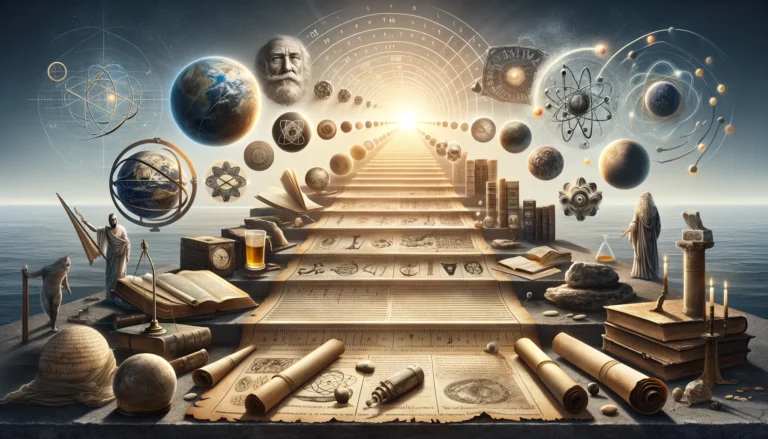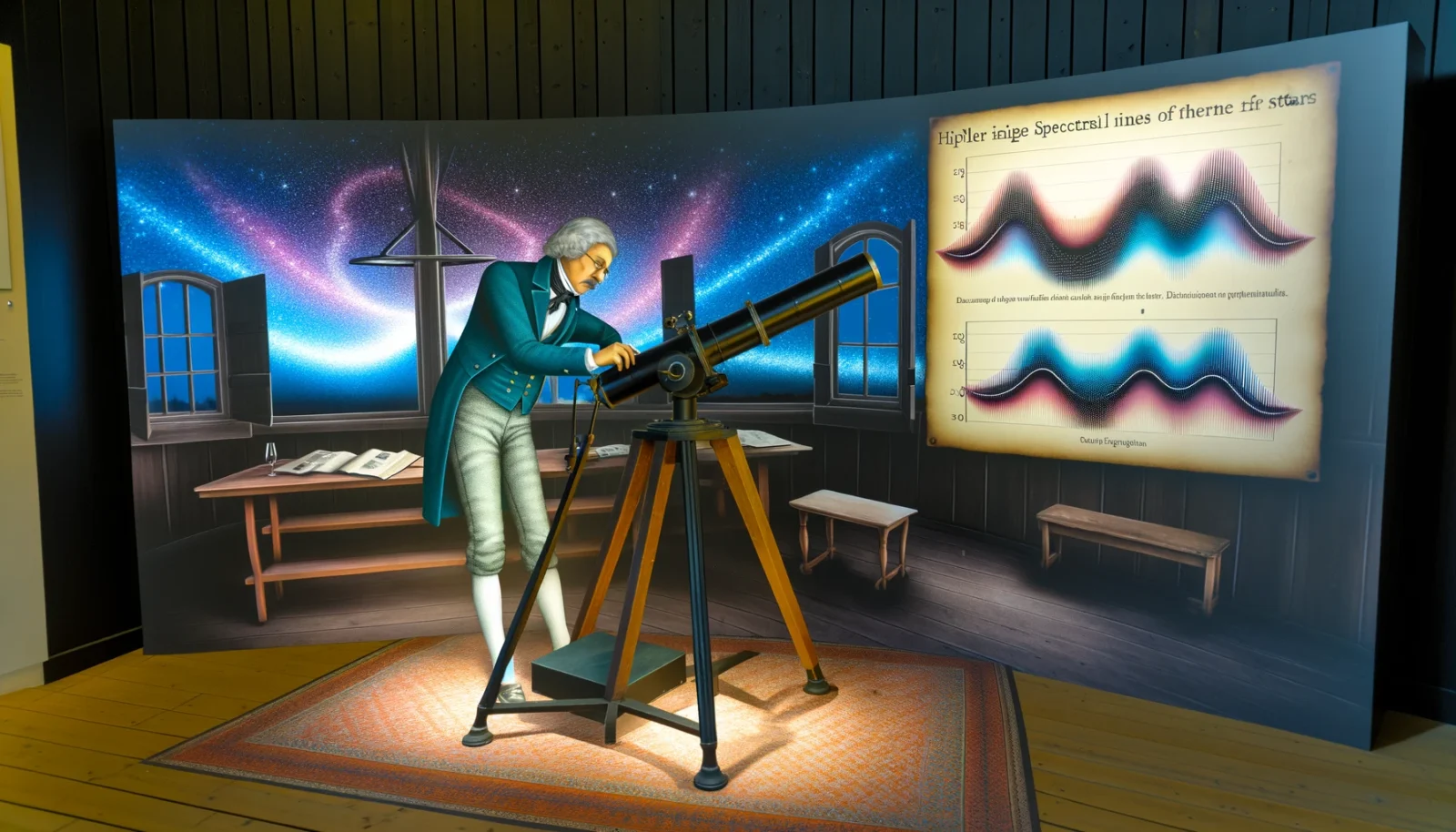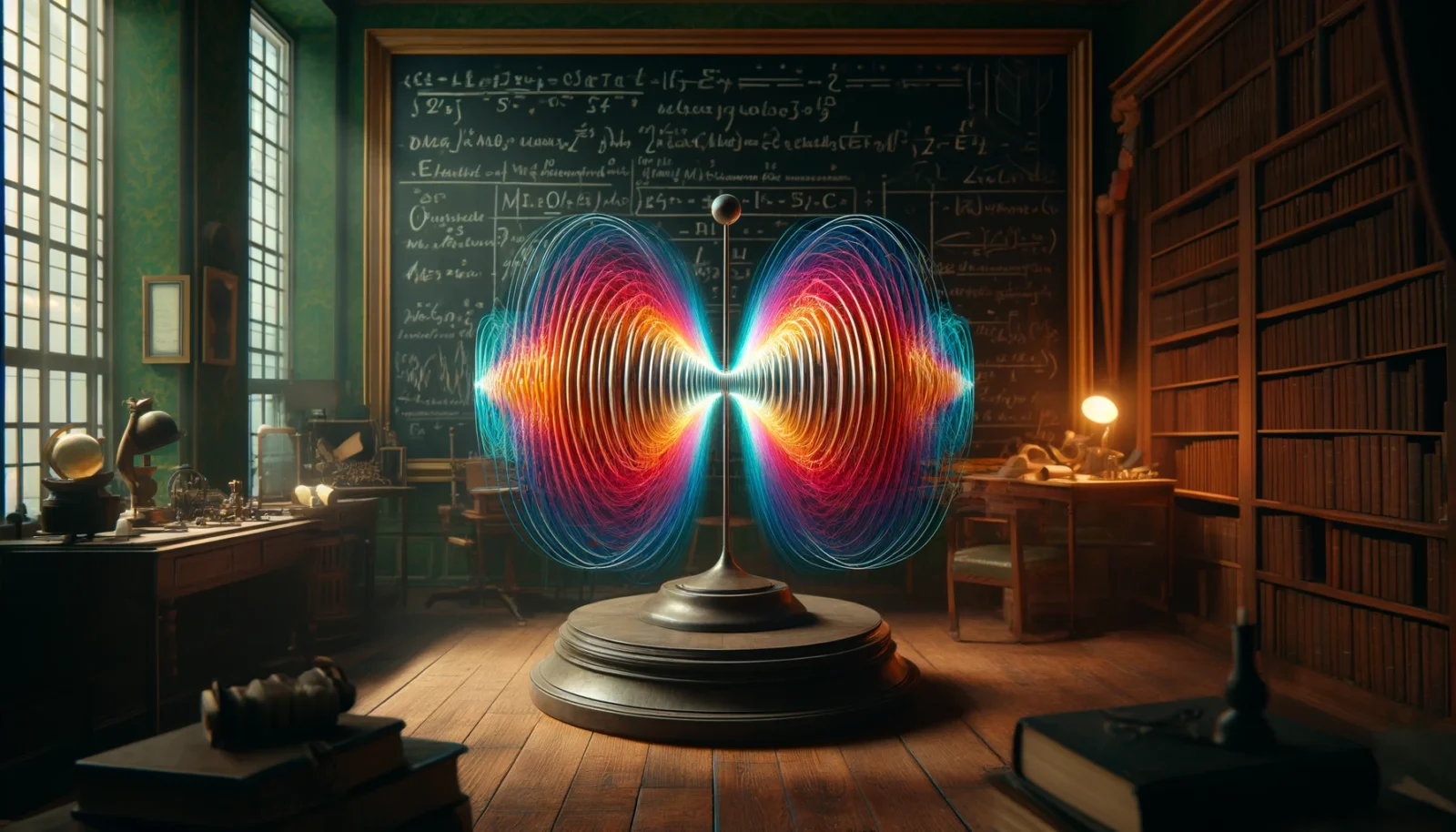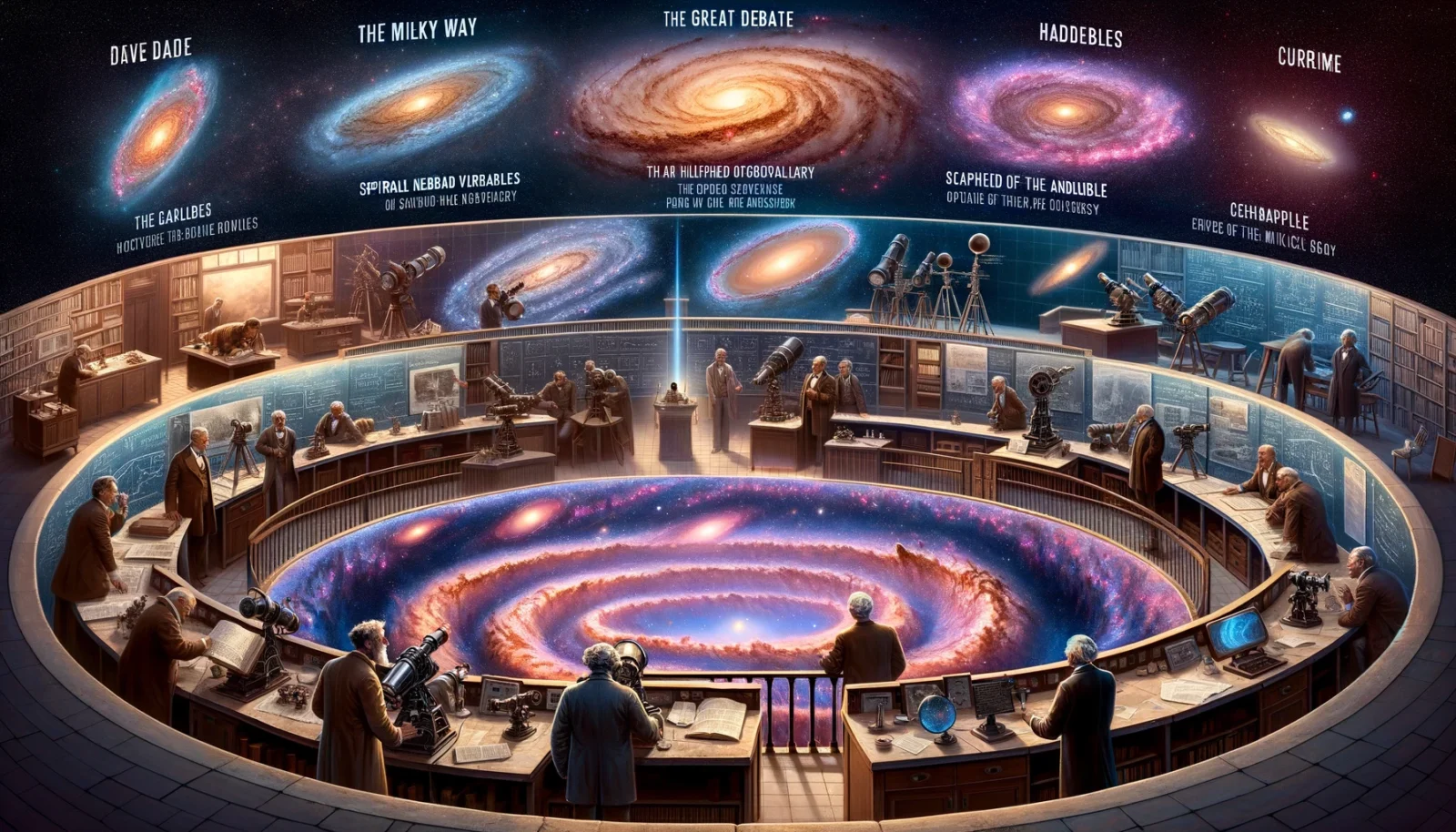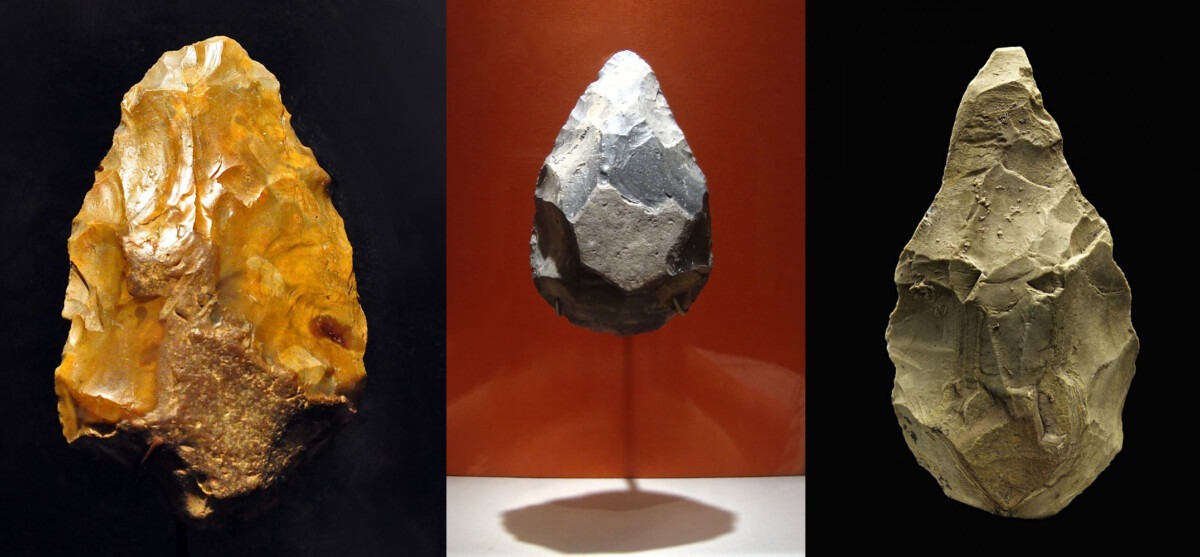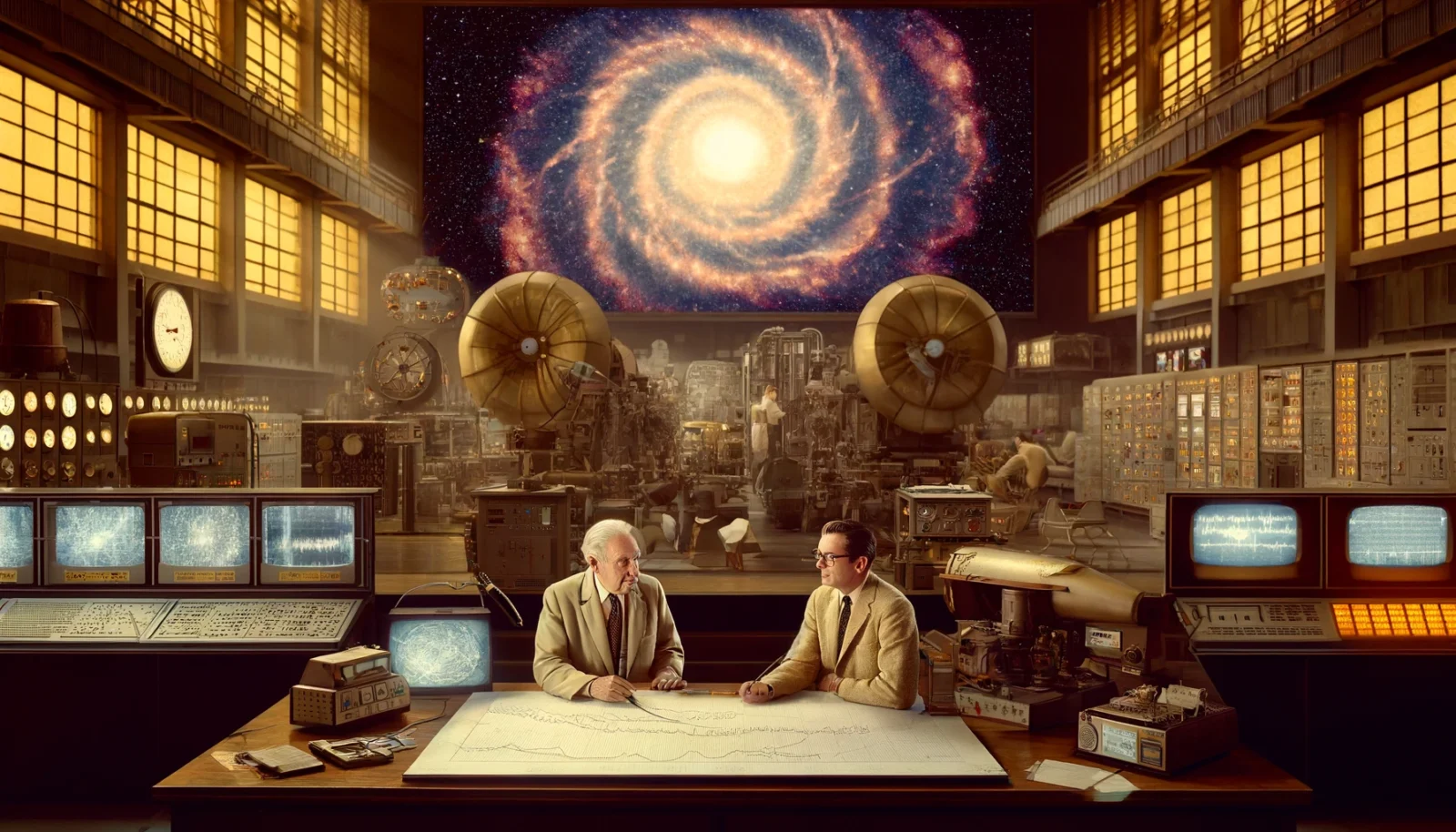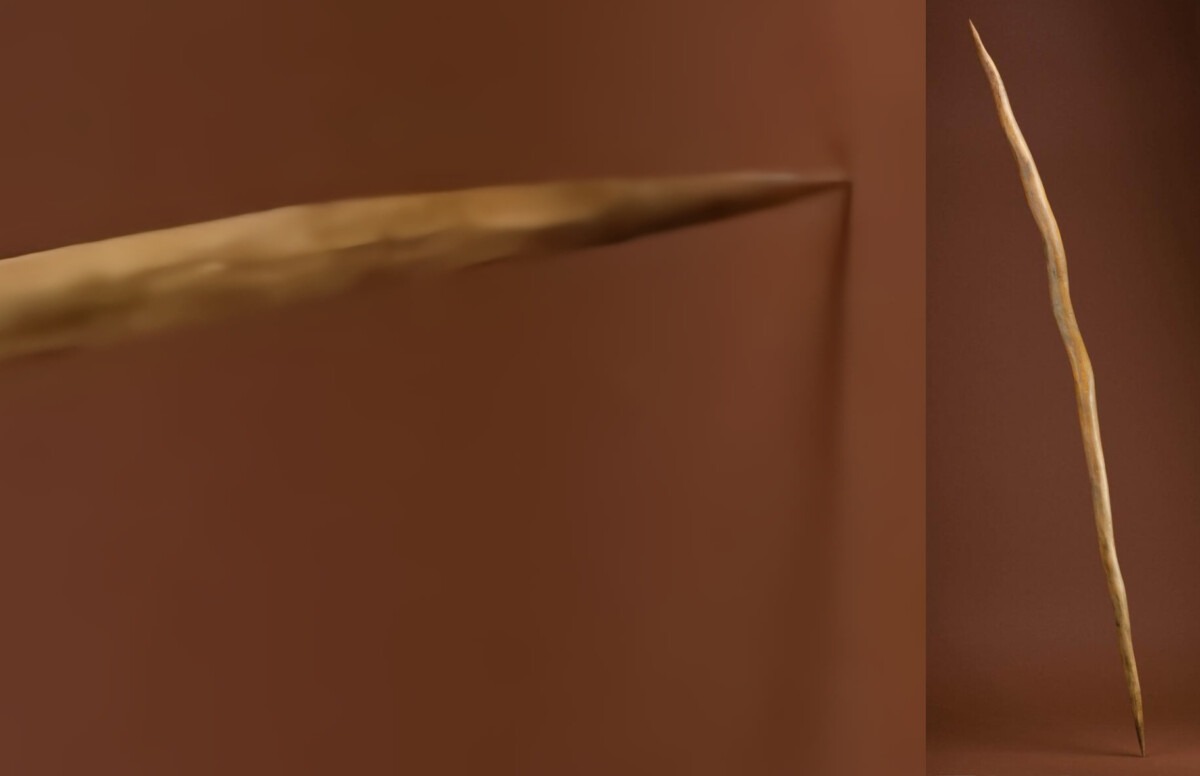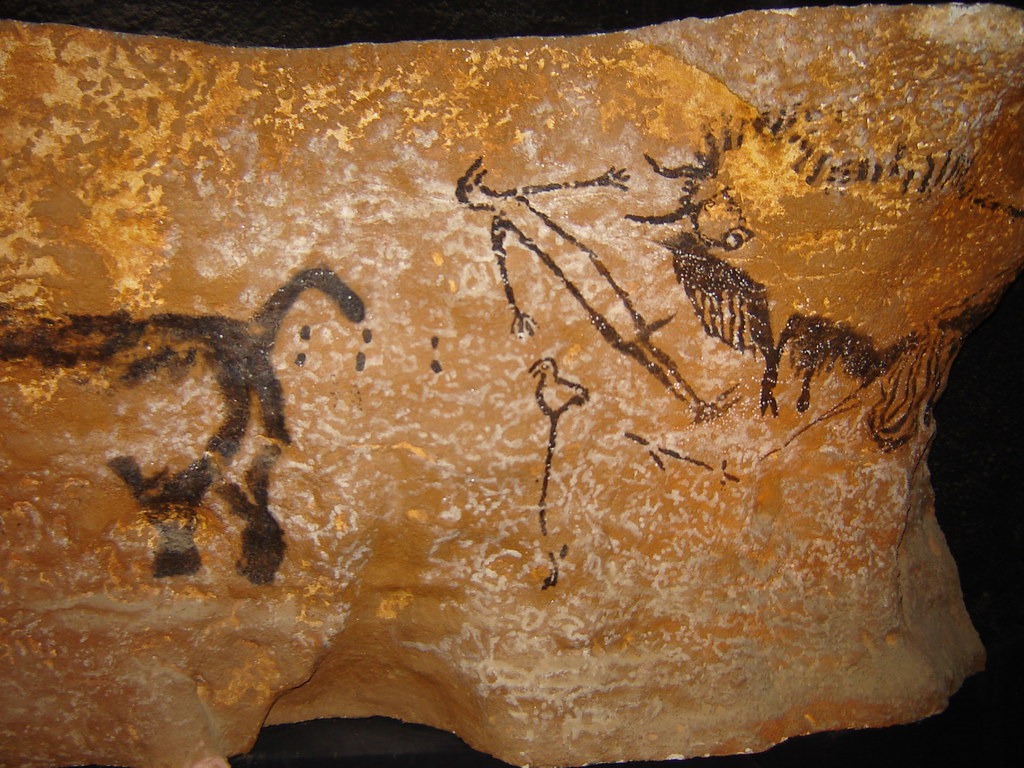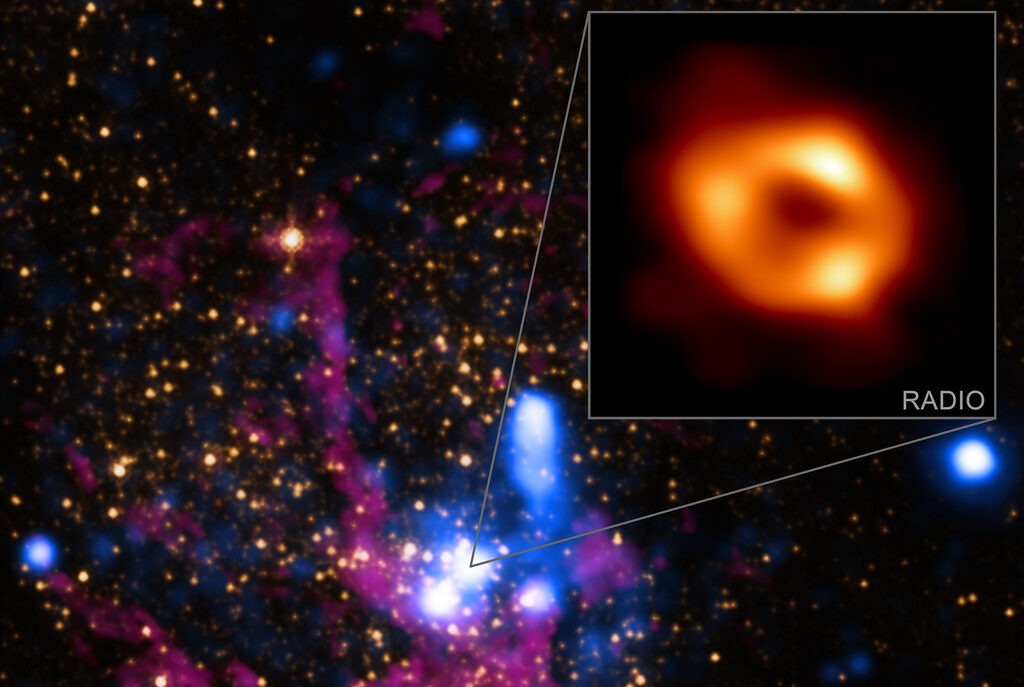Philosophy TL: ALL > Big Picture > Ideas > Philosophers > Publications
Filter To: All Ideas > Empirical > Rational > Irrational > Mind Blowing
Rediscovering the lost & the mind blowing!
From Primitive to Enlightened: All of our ancient stories, including all of our religious stories, were written during intellectually primitive times: during epochs of ignorance. This timeline paints a clear picture of when our great ideas entered or returned to our “current” Grand Rational Framework of common knowledge. Things like the micro-world, atoms, and the heliocentric model of the solar system. The mind-expanding ideas about reality. For context, it also includes when modern society learned about old ideas and things, forgotten, then rediscovered. Things like ancient flood stories predating the story of Noah, the founding of Jericho over 11,000 years ago, and bread-making going back at least 14,000 years.
The Ideas Timeline: Rediscoveries
Fossil discoveries have brought wonder to humanity from the very beginning. The discovery of fossils from prehistoric animals like sauropods and mammoths inspired ancient people to create stories about massive, powerful creatures. Dragon-like and other creatures appear in myths across the world from our earliest writings.
For example, in China, the discovery of fossils from giant prehistoric animals like mammoths and sauropods dates back to the Shang Dynasty (around 1600-1046 BCE). These finds likely influenced the development of dragon legends, which were present in Chinese culture by the Zhou Dynasty (1046-256 BCE). As early as the 4th century BCE, Chinese scholars documented the discovery of “dragon bones.” These bones, often large and unexplained, were likely dinosaur fossils. The Chinese ground them into powder for use in traditional medicine, believing them to possess healing properties.
Greco-Roman authors, such as Herodotus and Pliny the Elder, mentioned large bones being discovered and attributed them to mythical creatures or ancient giants. While early thinkers like Xenophanes of Colophon recognized some fossils as remnants of once-living creatures as early as 600 BCE, it wouldn’t be until the 1600s that humanity would start to accept this empirical evidence as once living creatures.
In the vibrant intellectual climate of Ancient Greece, the 6th century BCE marks the embryonic stage of formal logic, attributed to the philosopher Thales of Miletus (around 624-546 BCE). Thales, recognized as the first of the Seven Sages of Greece, embarked on a quest that laid the foundational stones of logical thought. He shifted the explanation of natural phenomena away from mythological interpretations towards rational principles.
The Greeks knew the Earth is spherical. For example, Pythagoras (570-495 BCE), Aristotle (384-322 BCE), and Euclid (circa 450 BCE) wrote about the Earth as a sphere. Eratosthenes (276-194 BCE) even calculated the circumference of the Earth to within 1%. He also wrote about the idea that India could be reached by sailing westward from Spain.
Nearly 2,000 years later during the time Columbus sailed the ocean blue, most religious nuts believed the Earth was flat and he would fall off. What happened to truth? Although many educated people knew all along, the dogma of the brainwashed religious nuts over the centuries suppressed and terrorized the masses into believing things like the Earth is flat, the Earth is only a few thousand years old, women are property, and other such nonsense. The harm caused by formal religions over the eons is incalculable.
30 Phil, Chapter 9, Aristotle, Touchstone 22: Syllogisms.
While deductive reasoning existed informally before Aristotle, he formalized it in his work “Prior Analytics” by introducing the Syllogism. It structures arguments into two key premises leading to a conclusion and remains widely used today. Aristotle knew that syllogisms can both analyze and validate derived truths, by logically connecting premises.
30 Phil, Chapter 9, Aristotle, Touchstone 23: Rationalism.
Rationalism emphasizes reason and a priori knowledge—knowledge you are born with—as the primary means of understanding reality. It says truths can be known independently of experience and that reason alone can provide an understanding of the world.
30 Phil, Chapter 9, Aristotle, Touchstone 24: Empiricism.
Empiricism says knowledge comes primarily from sensory experience. It emphasizes the role of observation and evidence in forming beliefs and understanding the world.
30 Phil, Chapter 10, Pyrrho of Elis, Touchstone 28: Skepticism.
Skepticism emphasizes the continuous challenging of beliefs. Pyrrhonian Skepticism, founded by Pyrrho of Elis, takes this a step further by encouraging you to suspend judgment about reality and truth. This approach urges you to question your beliefs and avoid dogmatism. With skepticism, you question both reason and sensory data. Pyrrhonian Skepticism asserts that neither reason nor sensory perception can provide us with certain knowledge, leading to the suspension of judgment on all things.
30 Phil, Chapter 17, Alhazen, Touchstone 42: Senses.
How we perceive an external world starts to become clear about 1020 CE. Since Alhazen and his pioneering work around 1020 CE, we have made significant advancements in understanding our senses. Our direct impressions of the world. Prior to Alhazen, most people on Earth believed in strange things like magical light-emitting-flashlight eyes. This new look integrates modern science, genetic variations, and future possibilities, offering a holistic and forward-looking perspective on human sensory experiences.
With the invention of the microscope, humanity became aware of the microworld which is defined as 1 to 1000 microns. A micron is equal to one thousands of a millimeter. A cell is about 10 microns wide. Paper is about 100 microns thick. The unaided human eye can see items as small as 50 microns, or about half the width of a piece of paper.
Scientists use three scales when talking about the biological world: the milliworld, microworld, and the nanoworld. The milliworld contains all visible items down to 1 millimeter and includes very small things such as ants, fleas, and grains of sand.
By 1640, the microscope was perfected to the point that allowed the introduction of the microworld to humanity. The microworld contains items with a diameter from 1 millimeter to 1 micrometer, or 1 micron. The microworld contains things like single celled organisms as well as the largest bacteria. By 1640, humanity started it’s introduction to trillions of organisms living everywhere including nearly everything you touch, in the ground, inside plants, and even inside humans. Humans host over 10,000 species of organisms in, on, and through the human body — known as the human microbiome. Every human no matter how clean you think you are is playing host to 10-100 trillion organisms. This fact gradually changed how every human on Earth views life.
The nanoworld which includes smaller bacteria as well as viruses, proteins, and molecules would have to wait for the invention of the electron microscope in 1931.
Note: The micron and micrometer are the same size, but you use microns (μ) when measuring thickness, and micrometers (μm) when measuring the distance between things. So you can say a cell is 10 microns wide, or you can say the diameter of a cell is 10 micrometers. The term nanomicron, which would be equal to a nanometer, is not currently in regular use.
30 Phil, Chapter 21, Galileo, Touchstone 54: Modern Cosmology.
The story of Galileo is also the story of Copernicus, and the story of modern cosmology. To properly tell the story of Copernicus, we need to mention Aristarchus of Samos, a Greek astronomer and mathematician born around 310 BCE. Aristarchus put forth a heliocentric model, proposing that the Earth and other planets orbited the Sun. Unfortunately, his ideas did not gain widespread acceptance. Over the millennia some scholars had the idea that the universe was vast, but no proof. With the invention of the telescope in 1608, the proof was within reach. This was the time when our human-centric world expanded into the vastness of space.
30 Phil, Chapter 20, Francis Bacon, Touchstone 51: The Scientific Method.
Science is the ongoing study of nature through observation. It’s that simple. If you see something new in nature, that’s science. Many definitions of science tend to intertwine the “how,” but the “how” is perpetually evolving, just like science itself remains a continual journey, never settling into dogma. Currently, we call the advanced systematic “how” of science the scientific method. It is an iterative process that uses controlled observation, induction and deduction, controlled testing with falsifiability, modeling, and peer review to understand objective reality.
30 Phil, Chapter 21, Galileo, Touchstone 52: Relativity Principle.
The Relativity Principle states that the laws of physics are the same for all observers in uniform motion relative to one another. This means that the passage of time, the length of objects, and the speed of light are the same for everyone, regardless of their relative motion.
Introduced by Galileo Galilei and detailed in his 1632 work “Dialogues Concerning Two New Sciences,” the Relativity Principle posits that the laws of physics are the same in any system moving at a constant speed in a straight line, regardless of its particular speed or direction. This principle laid the groundwork for understanding that motion is relative to the observer’s frame of reference.
30 Phil, Chapter 22, Descartes, Touchstone 56: Mind-Body Dualism.
This concept splits the universe into two different substances. Cartesian Dualism splits the mind and body into separate entities that interact with each other. It fundamentally challenged the Aristotelian view that the mind and body are inseparable, laying the groundwork for modern explorations of the unknown and unknowable.
Although protozoa evolved from eukaryotes about 2 billion years ago, it was 1674 that humanity saw them for the first time. That’s when Antonie van Leeuwenhoek, using his meticulously crafted microscopes, discovered protozoa—the first microscopic observation of single-celled organisms. His detailed observations and descriptions of what he called “animalcules” in a drop of pond water opened a completely new world to scientific study, fundamentally transforming our understanding of life on Earth. This discovery not only marked the birth of microbiology as a science but also challenged existing views on the complexity and diversity of life, laying the groundwork for the exploration of biological processes at the cellular level. Little did Antonie know, he was looking at the descendants of the ancestor to plants, animals, and fungi! Later, in the 1990s, scientists put together the following timing:
- 1.7 billion years ago: Plants diverge from the common protozoa ancestor.
- 1.5 billion years ago: Fungi and animal branch emerges.
- 1.3 billion years ago: Fungi diverge from the common fungi-animal ancestor.
Analysis: The discovery of protozoa brought to light the vast, previously invisible world of microorganisms, reshaping biological and medical sciences by introducing the concept that life extends far beyond what is visible to the naked eye. This revelation had profound implications, leading to advances in disease control, understanding ecological interactions, and even prompting discussions on the origins of life.
Invented by Newton in the 1660s (pub. 1687) and independently by Leibniz in the 1680s (pub. 1684). Both built on Galileo’s popularizing the idea of the infinitesimal.
Calculus, the mathematical study of continuous change, introduced the concepts of differentiation and integration, providing tools to model and analyze motion, growth, and the infinitesimal. Newton, working primarily in England, utilized calculus to formulate his laws of motion and gravitation, fundamentally altering our understanding of the physical universe. Simultaneously, Leibniz developed a similar set of mathematical tools, contributing a notation system that remains in use to this day. He introduced the integral sign (∫) and the differential operator (d), foundational in calculus for representing integration and infinitesimal changes, respectively. His “dy/dx” notation for derivatives elegantly describes rates of change, all of which remain central to calculus today.
While black holes were first proposed in the 18th century, they were not seriously proposed until 1916 with Albert Einstein’s General Relativity. The concept of a “black hole” has its roots in the 18th century when John Michell and Pierre-Simon Laplace independently speculated about the existence of “dark stars” — celestial bodies whose gravity is so strong that not even light could escape from them. However, the modern concept of black holes is largely based on the solutions to Albert Einstein’s General Theory of Relativity.
The term “black hole” was not used until much later, but the theoretical foundation was laid in 1916 by Karl Schwarzschild, who found a solution to Einstein’s field equations that described such an object. This solution implied the existence of a singularity, where curvature of spacetime becomes infinite. In 1939, Robert Oppenheimer and others predicted that neutron stars beyond a certain mass would collapse into black holes.
It took humanity millennia to transition from viewing large bones as relics of mythical creatures to recognizing them as evidence of extinct animals. The first significant step came in 1676 when Robert Plot, an English naturalist, described and illustrated a large thigh bone in his book “Natural History of Oxfordshire.” Although he believed it belonged to a giant human, his work laid the foundation for future scientific inquiry.
The late 18th and early 19th centuries saw increased interest and discovery, with key figures like Mary Anning and Gideon Mantell contributing to the field. Mantell’s identification of “Iguanodon” in 1822 further solidified the scientific community’s acceptance of fossils as remnants of extinct animals.
By 1824, the scientific community had made significant strides, facilitating a shift from mythological interpretations to scientific explanations. When William Buckland described and named “Megalosaurus” based on fossils found in Oxfordshire, England in 1824, he scientifically identified the first dinosaur, marking the beginning of paleontology as a field.
The Doppler effect is the apparent difference between the frequency at which sound or light waves leave a source and that at which they reach an observer, caused by relative motion of the observer and the wave source.
The Doppler effect for sound was first described by the Austrian physicist Christian Doppler in 1842. He presented his ideas in a paper titled “On the Coloured Light of the Double Stars and Certain Other Stars of the Heavens,” proposing that the observed frequency of waves depends on the relative speed of the source and the observer. This principle was later confirmed experimentally by the Dutch scientist Christophorus Buys Ballot in 1845.
In 1848,French physicist Hippolyte Fizeau observed a shift in the spectral lines of stars, hinting at a similar effect for light waves.
Discovered in 1853 by British archaeologist Austen Henry Layard, the Epic of Gilgamesh’s flood story had been lost for millennia. Layard uncovered a library of clay tablets in the ruins of Nineveh, in modern-day Iraq. This story predates the earliest written version of the biblical flood story by at least 400 years and likely by more than a millennium. Both narratives tell essentially the same story, with different character names, minor variations, and a shift from multiple gods to a single god. The story of Noah’s Ark, set around 600-500 BCE, is a retelling of a much older Sumerian story from about 2550 BCE featuring the character Ziusudra.

James Clerk Maxwell predicted electromagnetic waves, but he did not perform experiments to prove their existence. His prediction was based on his work on the classical theory of electromagnetic radiation, which unified electricity, magnetism, and light as different manifestations of the same phenomenon. Maxwell’s equations for electromagnetism predicted the existence of waves of oscillating electric and magnetic fields that travel through empty space at a speed that could be predicted from simple electrical experiments. The existence of electromagnetic waves was later experimentally confirmed by Heinrich Hertz in 1887.
- 1831: Michael Faraday discovers electromagnetic induction: electric current in a wire.
- 1864: James Clerk Maxwell publishes “A Dynamical Theory of the Electromagnetic Field,” where he predicts the existence of electromagnetic waves, including radio waves.
- 1887: Heinrich Hertz experimentally demonstrates the existence of radio waves, confirming Maxwell’s theories.
- 1895: Guglielmo Marconi, first practical use, radio waves to transmit Morse code without wires.
- 1906: Reginald Fessenden, first radio broadcast of audio (both music and speech) on Christmas Eve.
- 1920s: Radio becomes a popular medium for entertainment and news
In 1905, radiometric dating was discovered. It is a method used to date rocks and other objects based on the known decay rate of radioactive isotopes. This technique is used to date rocks. Paleontologists regularly order discoveries in chronological order and estimate their age. Knowing the age of rocks allows paleontologists to assign known values to rocks and fossils to firm up the known historical calendar.
Special Relativity explains the relationship between space, time, mass, and energy. It shows that time and space are not separate entities but are connected as a single entity called spacetime. Additionally, it introduced the famous equation E=mc², which demonstrates that mass is engergy, energy is mass. They are equivalent and can be converted into each other.
Albert Einstein’s Special Theory of Relativity, published in June 1905, revolutionized physics by introducing concepts like time dilation and length contraction, showing that the speed of light in a vacuum is constant and independent of the motion of all observers. It showed that as objects approach the speed of light, time slows down, lengths contract, and mass increases. This theory provided a new framework for all of physics by proposing that space and time are interwoven into a single continuum known as spacetime.
General Relativity incorporated gravity into the mix. It describes gravity not as a force, but as the curvature of spacetime caused by massive objects. According to General Relativity, the curvature of spacetime around an object like the Earth causes objects to fall towards its center, which we experience as gravity.
In November 1915, Einstein expanded on his Special Theory of Relativity with his General Theory of Relativity, which he published formally in 1916. This theory introduced the concept that gravity is not a force as traditionally conceived but rather a curvature of spacetime itself, caused by mass and energy. General Relativity provides a comprehensive description of gravitational phenomena and has been confirmed by numerous experiments and observations, including the bending of light by gravity and the precise orbit of planets.
By 1929, an important time in cosmology, Edwin Hubble used the spiral nebulae data collected by Vesto Slipher from 1912 to 1925 to introduce the world to galaxies.
Prior to the 20th century, astronomers debated whether spiral nebulae were merely gaseous clouds within the Milky Way, possibly forming solar systems. This view changed dramatically following the “Great Debate” in 1920 between Harlow Shapley, who believed the Milky Way constituted the entire universe, and Heber Curtis, who argued these nebulae were distant “island universes” or separate galaxies. This debate was conclusively settled by Edwin Hubble in the mid-1920s through his observations using the 100-inch Hooker Telescope at Mount Wilson Observatory. By identifying Cepheid variable stars in the Andromeda nebula between 1923 and 1924, Hubble determined Andromeda’s considerable distance from the Milky Way, thus supporting Curtis’s hypothesis. By 1929, Hubble had not only confirmed that spiral nebulae were independent galaxies but also discovered the relationship between a galaxy’s redshift and its distance, formulating Hubble’s Law and providing strong evidence for the expanding universe—a cornerstone of the Big Bang theory.
Starting in 1931 with the invention of the electron microscope, the nanoworld became visible to us. The nanoworld contains items as small in diameter as 1 micrometer (1 micron) to a diameter 1,000 times smaller, a diameter of 1 nanometer. The nanoworld includes the smallest single celled organisms, the smallest bacteria as well as viruses, proteins, and molecules.
Note: The virus was discovered in 1892 through scientific experiments and first seen in the 1930s.
Rationally predicted, unconfirmed: The Oort Cloud is a theoretical vast sphere of icy objects believed to surround our solar system at distances ranging from about 2,000 to 100,000 astronomical units from the Sun. Conceived by the Dutch astronomer Jan Oort in 1950, this distant cloud is thought to be the source of long-period comets that occasionally visit the inner solar system. Oort proposed this model to explain why comets appear with seemingly random and highly elongated orbits, suggesting that they originate in this remote cloud, pushed towards the Sun by gravitational interactions with passing stars or galactic tides. Though the Oort Cloud remains unseen, the behavior and trajectories of these comets provide indirect evidence supporting its existence, hinting at a reservoir of comet-like bodies that shapes our understanding of the solar system’s boundaries and early history.
Current Debate: Proposed by Ernst Öpik in 1932 as the source of long-period comets, and then revised by Jan Oort in 1950. The Oort Cloud has not been directly observed, and its existence is still a topic of debate.
In 1946, Willard Libby created the method for dating organic materials by measuring their content of carbon-14, a newly discovered radioactive isotope of carbon. This dating technique provides objective age estimates within a few decades for carbon-based objects that originated from living organisms.
The ancient site of Çatalhöyük was not continuously known through historical records and was rediscovered in the modern era. It was first excavated by James Mellaart in 1958, who conducted major excavations between 1961 and 1965. These excavations revealed a wealth of information about Neolithic life and brought significant attention to the site. Its discovery significantly expanded understanding of Neolithic societies, particularly their complex architectural and social structures. The extensive preservation of buildings, artifacts, and art at Çatalhöyük has provided critical insights into early urban development, making it one of the most important archaeological sites for studying prehistoric human society.
“By 1.76 million years ago, early humans began to create hand axes.”
This seemingly simple statement about hand axes is mind-opening and philosophically significant for a few reasons. It highlights the ingenuity of early humans. Crafting tools from stone requires planning, foresight, and understanding of cause and effect. It also represents a critical leap in technological development. These tools allowed early humans to interact with their environment in entirely new ways, signifying a turning point in their evolution. Finally, it prompts us to consider the vast timeframe involved. Hand axes are a tangible reminder of our distant past and the remarkable cognitive development that laid the groundwork for our current existence.
Analysis: Around 1960, paleoanthropology started uncovering early human cognitive abilities due to Leakeys’ discovery and promotion of Homo habilis. Homo habilis was associated with the Oldowan tools found in Olduvai Gorge, demonstrating early human tool use and cognitive abilities starting around 2.6 million years ago. This discovery was foundational in reshaping our understanding of early human intelligence and technological skill.
In 1965, Arno Penzias and Robert Wilson, two radio astronomers at Bell Telephone Laboratories, stumbled upon a mysterious and persistent background noise that pervaded their radio telescope. After much investigation and the elimination of potential terrestrial and instrumental sources, they concluded that this noise was cosmic in origin. Their findings, published on May 20, 1965, identified this radiation as the Cosmic Microwave Background (CMB) — the afterglow of the Big Bang, providing critical empirical support for the Big Bang theory of the universe’s origin. This discovery, serendipitous as it was, marked a monumental advancement in cosmology, transforming our understanding of the universe’s earliest moments.
In 1975, Italian archaeologist Paolo Matthiae and his team unearthed the remarkable Library of Ebla at Tell Mardikh, Syria, revealing a trove of around 20,000 clay tablets and fragments. This discovery dramatically expanded our understanding of ancient Near Eastern civilizations, introducing Eblaite as a previously unknown Semitic language and providing unprecedented insights into the culture, economy, politics, and diplomatic relations of Ebla. The tablets’ contents, ranging from administrative records to diplomatic correspondence and literary texts, have offered scholars a unique window into the early Bronze Age, highlighting the sophistication and interconnectedness of ancient societies. The rediscovery of the Ebla library stands as a milestone in archaeological and historical scholarship, underscoring the complexity of human civilization in the third millennium BCE.
“By 350,000 years ago, early humans crafted javelin-quality spears.”
This revelation about ancient spears is profoundly enlightening as it demonstrates the advanced cognitive abilities and social cooperation among early humans. Crafting spears of this quality involves not only selecting the right materials and understanding the physics of balancing and sharpening but also strategic planning for hunting, which implies a sophisticated level of communal and cooperative behavior. This innovation marks a significant evolution in hunting tactics, enabling early humans to handle larger prey and gain a strategic advantage in their environment. The introduction of spears signifies not just technological progress but also a crucial adaptation in human survival strategies.
Analysis: In 1994, these artifacts were confirmed through stratigraphic analysis and radiometric dating which placed them solidly within the Middle Pleistocene. The archaeological community received a substantial boost in understanding human prehistory with the discovery of wooden spears from Schöningen, Germany. These well-preserved spears, associated with Homo heidelbergensis, represent some of the earliest clear evidence of purpose-built hunting weapons by humans. The spears indicated not only the use of complex tool-making skills but also early collaborative hunting. This discovery significantly extended our understanding of the technological and cognitive capabilities of Homo heidelbergensis.
It’s clear: neanderthals created art. The discovery of cave paintings in Spain, dated to over 64,000 years ago, marked a profound shift in our understanding of Neanderthals. This corrected the longstanding perception that Neanderthals lacked symbolic thought and artistic expression. To learn more, check out Beyond Human Bias: Reassessing Neanderthal Intelligence.
The groundbreaking discovery that humans were making bread 14,000 years ago, before the advent of agriculture, was published in 2018. Since grain is easy to grow, does this suggest agriculture might have started a few thousand years earlier? Under study, but the discovery of bread-making from around 14,000 years ago indeed suggests that humans were experimenting with grains before the widespread adoption of agriculture, which is traditionally dated to about 12,000 years ago with the Neolithic Revolution.
Researchers analyzing charred food remains from a Natufian hunter-gatherer site called Shubayqa 1 in northeastern Jordan found evidence of bread-like products. This finding was significant because it pushed back the earliest known use of cereal grains and highlighted the complexity of pre-agricultural human societies. The study, revealing the preparation and consumption of bread from wild cereals, provided crucial insights into the dietary habits of Natufian societies and offered new perspectives on the transition to agricultural life.
The first image of a black hole was captured in 2019 by the Event Horizon Telescope (EHT) collaboration. Before that, the first observational evidence was discovered in 1964 with the detection of the X-ray source Cygnus X-1, which was later interpreted as material accreting onto a black hole from a companion star. In 1971, Cygnus X-1 was proposed as the first robust observational evidence of a black hole by astronomers Tom Bolton and Louise Webster.
Next >>
Philosophy TL: ALL > Big Picture > Ideas > Philosophers > Publications
Filter To: All Ideas > Empirical > Rational > Irrational > Mind Blowing


